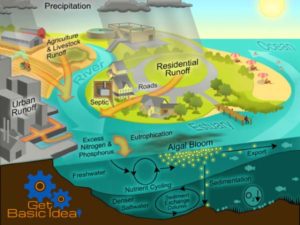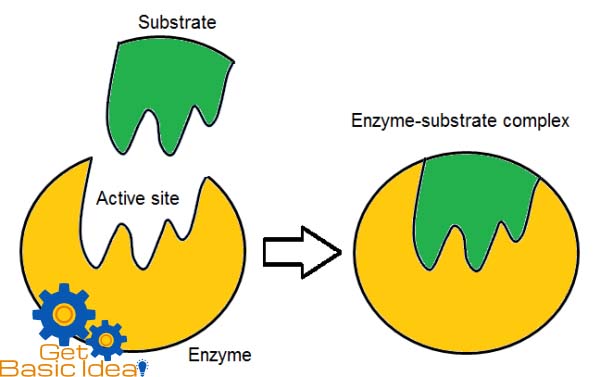Eutrophication | Environmental Chemistry
What is Eutrophication?
Eutrophication is an outcome of the process of adding excessive nutrients like nitrates, phosphates and organic matter into a lake or other water body. Algal blooming usually caused by runoff of nutrients such as animal waste, fertilizers or raw sewage from the land. This causes a dense growth of plant life in the water body. Especially the fast spreading of green algae leads to reduce the dissolved oxygen level in the water causing the death of fish due to suffocation. The BOD level (Biological Oxygen Demand) of such water bodies is high so that the decomposition of organic matter is done under anaerobic condition resulting stench emanating.
Eutrophication process can be considered as a natural process. But the human activities can accelerate this process resulting pollution of water bodies. So the eutrophication has become pollution problem nowadays.
The increased growth of blue green algae due to excessive load of nutrients in the water body causes algal blooming. When algae die, the nutrients in the organic matter are decomposed by microorganisms consuming dissolved oxygen in the water. So the dissolved oxygen level is depleted gradually which lead the death of aquatic animals like fish reducing the biodiversity.
Sources of nutrients affect for eutrophication.
- Human waste matter from septic tanks.
- Agricultural runoffs.
- Waste water treatment plants.
- Household detergents.
- Soil and river bank erosion.
- Waste materials from animal industries and farms.
- Atmospheric depositions like acid rain.
- Irrigation drainage.
- Urban storm water runoff.
Impacts of eutrophication.
- Algal blooming and increased aquatic vegetation.
- Destruction of fish population.
- Higher biological oxygen demand due to decreased level of dissolved oxygen
- Effects of algal toxins.
- Decreased water transparency.
- Changes of color and odor of water bodies.
- Decrease in biodiversity.
- Invasion of new species.
- Adverse effect on human health.
Algal toxin is a major problem caused by algal blooming. Certain species of algae can produce a group of highly poisonous group of chemicals known as algal toxins. These chemicals are toxic even at very small concentrations and capable of producing adverse health effects on humans. These toxins are very stable and cannot be destroyed by heating water. There are different types of toxins produced by cyanobacteria.
Algal toxins produced by algae.
| Type of toxin | Organism produced | Diseases caused |
| Hepatotoxins | Microcystis Nodularia Anabeana |
liver damage Gastrointestinal problems |
| Neurotoxins | Anabeana | Staggering Paralysis |
| Endotoxins | Anabeana | Skin rashes Eye irritation Allergic reactions |
Admin of Get Basic Idea / Senior Solution Architect.




